After a few months of rumours and leaks, Akai have finally released the new MPC X flagship, the MPC X ‘Special Edition’ (or ‘MPCX SE’). Does this herald the anticipated ‘next generation’ of MPC hardware, or is this another retro-styled limited edition? Let’s take a closer look at what this new MPC brings to the table!
MPC X Special Edition – The External Hardware
The most obvious difference the MPCX SE and the previous MPC X model is the physical appearance, as the MPC X Special Edition sports the same retro colours as the retro editions of the MPC Live Mk 2 and the MPC One:
This will definitely appeal to people who love the classic MPC look, although I’m not 100% sure about those black knobs. But overall I can’t deny that it looks pretty good, very much like a standalone MPC Renaissance:
Beyond the new retro colours, you might be surprised to learn that in terms of external hardware, this new MPC X Special Edition has no other updated features compared to the original MPC X. It has the same screen, same buttons, same audio and midi I/O, same data ports, same screen housing and kick stand.
Let’s not forget that a lot has changed in the MPC firmware since the MPC X was released over 6 years ago, so I’m surprised there’s not even some new ‘secondary’ button options added to provide quick access to new features like the new ‘Sounds’ browser or ‘Favourites’.
What Happened to the MPC ‘XL’?
The original leaks for this new MPC X showed that it was initially referred to as the MPC XL, but it seems that Akai decided to change the name to ‘Special Edition’ instead. FCC testing photos also showed it had gained an ethernet port, but this was also dropped in the final release.
This is not the first time that Akai have changed the name of a product before its final release. The Akai Force was originally called the APC Live, and the MPC5000 was originally called the MPC3500.
MPCX SE – Internal Hardware Changes
One area where the MPC X Special Edition trumps the previous MPC X model is the amount of memory installed, which has now been bumped up from 2GB to 4GB. This now matches the memory found in the MPC Key 61 and helps cement its ‘flagship’ status.
If you’re not familiar with the memory specifications of these MPCs, the memory (RAM) is factory installed as part of the internal SOM and is not user-upgradable. It is what it is. This memory must also host the MPC firmware (including the Linux OS that runs it), and together they take up approximately 1GB of that RAM.
On the previous MPC X you effectively had approximately 1GB of free RAM to use for your projects, but with the MPCX SE you have 3GB of free RAM; so doubling the RAM actually gives you three times more usable memory.
This is good news if you intend using some of the built in plugins, as for example, each instance of ‘Studio Strings’ uses 31% of RAM on the previous MPC X model, but on this SE model should only use around 10% (Shameless plug: if you’re looking for an even lower memory alternative to Studio Strings, checkout my instrument expansion, MPC Orchestral, which contains a complete orchestra’s worth of fully playable multisampled instruments including strings, woodwinds, brass and percussion).
Please note that there are no changes to the internal CPU, this is the same quad core processor as used on all other standalone MPC models.
Another internal hardware change is the amount of pre-installed storage, which is bumped from 16GB to 48GB. Internal storage is primarily used for the factory content (10GB of drums kits, instruments, demo projects etc) as well has the internal plugin content.
Akai state that over 16GB is available for user storage, although as I’ve stated before, I really do not recommend saving any of your projects to the internal drive this drive is not visible when connecting to a computer via USB and there’s no easy way to transfer any of your projects ‘off’ that drive! Instead I recommend you just install an SSD drive to the internal SATA port and store all your content on that (this drive is accessible via USB).
More Ram or Disk Streaming?
While more RAM is great for running more plugins, audio tracks and sample heavy projects, another option would be to implement the disk streaming functionality that already exists on the Akai Force. Here audio content is streamed directly from your chosen disk (typically an SSD drive) so the amount of available system memory is mostly irrelevant. However, while disk streaming works great for audio tracks it may have a negative impact on system performance if steaming hundreds of individual samples within kits and instruments, so it’s likely a combination of RAM and disk streaming is ultimately the way forward.
MPCX SE – Factory Content & Plugins
On the subject of factory content, it seems that you get the exact same sample library that was on the original MPC X (‘The Vault’), which comprises mostly of hip hop and EDM drum kits and loops.
What is different is that the MPC X SE comes pre-installed with a suite of Akai’s internal plugins. In fact the MPCX SE has the exact same plugins as the MPC Key; this comprises all the usual free plugins that are available to all MPC models, such as DrumSynth, Odyssey, Solina, Hype etc, and some premium plugins; Fabric, Studio Strings, OPx4, Stage Piano, Stage EP and Organ.
Please note that the MPCX SE does not include all of Akai’s current premium plugins. The Mini-D plugin (the Moog model D clone) the ‘Flavor Pro’ effect plugin are both only included as trial versions so if you want these you will have to purchase separately. Seems a bit tight for a $2500 machine…
What Are MPC Plugins?
MPC plugins are basically VST plugins that have been built to work within the MPC ecosystem. Currently the MPC only supports plugins built by Akai and their sister company Air Music. Plugins can either be instruments (e.g. synths, multisampled instruments, romplers etc) or FX (reverbs, compressors, EQ, distortions etc).
Plugins each have their own unique interface where you can configure and tweak the sounds and settings. In standalone mode the MPC currently only supports using up to 8 plugin instances in any one project – this limitation does not seem to have been lifted in any of the new 4GB models, so I suspect it’s more related to CPU limitations.
An alternative to using plugin instruments is to use keygroup instruments which feature multisampled instruments mapped to MPC keygroup programs. Unlike plugins, keygroup instruments don’t have any ‘per instance’ restrictions so you are free to load as many as you wish.
MPCX SE Pricing
At the time of writing, the street price for the MPCX SE is $2500 (or £2050 in the UK). The average street price for the original MPC X is currently $1700, or £1400 in the UK. So as you can see, there is quite a significant difference in pricing here.
There’s no denying that this is an expensive piece of gear and you are definitely paying a premium for the retro design and the 4GB of RAM. The premium plugin content of course has some value, but how much is hard to quantify as Akai are continually running heavily discounted sales, so take the advertised plugin RRPs with a large pinch of salt.
But the MPC X was, in my opinion, always disproportionally priced compared to the other models in the range, and there was always a ‘premium’ price tag involved in going for the original flagship despite it having the exact same RAM and CPU as the MPC Live (which cost nearly half the price). At least now the MPC X SE has more memory, making it (and the MPC Key) more premium offerings in that respect. And of course, you expect to pay a premium for the latest gear, especially if you are an early adopter.
No More Original MPC X?
I’m not sure if Akai intend to keep on manufacturing the original MPC X model as it’s not completely clear whether this special edition is actually a ‘limited edition’ or a replacement for the existing X. There’s no mention of it being a limited edition on Akai’s product page, so I think it might be best to assume that moving forward they’ll only be making the SE model and any original MPC X models you see are likely the last remaining stock. Keep an eye out on the second hand market as some people will no doubt be upgrading their existing MPCXs on the cheap!
MPC X Special Edition – Should You Buy It?
So, should you buy an MPC X SE? Because let’s face it, at $2500 this is not a piece of gear that most people can just buy on a whim to satisfy a bit of GAS!
MPC Newbies:
If you’re new to the MPC world then you’ll need to decide which model is going to suit your particular needs. Personally I would not necessarily get too distracted by the 4GB of RAM as we’ve all been making music on the 2GB RAM MPC models now for over 6 years and it’s generally fine for most people, especially once you learn the best practices for memory management (check out the final part of the article here for some tips in this respect). I would still base my general advice on what I wrote in my MPC Buyer’s Guide which compared the X to the Live 2, One and original Live.
Ultimately both MPC X models have the full ‘suite’ of audio, MIDI and CV I/O, 16 Q-Links, largest screen and most dedicated buttons so is ‘full experience’ in terms of efficient workflow, and has enough hardware and sequencing features to serve as a central ‘hub’ in your studio, driving all your other gear with ease.
However with the introduction of usb audio interface support, even an MPC One can in theory now support 32 audio I/O and as many MIDI devices as you can throw at it, so there is absolutely no reason why the MPC One or Live 2 could not also be used as a (more compact) centrepiece of any studio.
And don’t forget that the original MPC X model is likely to be available for an ever decreasing price, both new and second hand, so if your primary desire is the large screen and 16 Q-Links you could save yourself a tidy packet by bagging the original model.
Owners of other standalone MPC models
If you have an MPC One, Live or Live 2, then I’m going to assume you probably chose it because of its own unique strengths, such as smaller size, portability, built in speakers, battery and of course, the lower price.
So before you succumb to the gear lust and drop $2500 on an MPC X, make sure it’s going to provide you wish the extra features that you actually need, be it the 4GB ram, the extra Q-links (these really do make a difference to your workflow), more I/O, larger screen etc, and consider whether this is worth the large dent in your bank balance, the large dent in the available space in your studio and the inevitable divorce when your partner finds out how much you just spent on another MPC.
Existing MPC X Owners
So, is this a worthy upgrade for existing MPC X owners? That’s a tough one, especially if you already have all the plugins. I suspect many existing MPC X owners will instead be waiting for the next generation of MPC hardware to arrive (hopefully with improved CPU). But that said if you continually struggle with RAM management and have fallen in love with that retro skin then I suspect you’ve already put your order in.
MPC X SE – Conclusion
Let’s be straight, the MPCX SE is not a revolutionary entry into the MPC line up – it’s very much the original MPC X with a few tweaks. But that’s fine in itself because those extra tweaks make it a better machine compared to the original (assuming you actually like the retro colours!). 4GB of RAM is better than 2GB and the extra plugins are a nice bonus.
Would I have liked to see Akai be bit a bit more adventurous here? Absolutely, in some ways this feels like a wasted opportunity to further refine the hardware, be it updated buttons, better screen housing, or even adding the touchstrip that has appeared on other new models. To me, this feels more of a stop-gap before the next generation of MPC hardware arrives (but this could be years away). And above all else, that eye-watering $2500 price-tag means the MPC X SE will almost certainly continue to be a niche model in the current line up.
I can’t say whether the MPCX SE is the best MPC for you because we all have different needs, but there’s no denying that the MPCX SE is now the most fully featured MPC available on the market today. So if you need all those flagship features, have the money to spare and the space in your studio, then this might just be the MPC for you.
MPC Bible – the Complete Beat Making Course for all modern standalone MPCs
The MPC Bible is my highly-acclaimed MPC instruction course covering all aspects of working with modern standalone MPCs, with carefully structured step-by-step tutorials that quickly teach you all the essential workflows, tricks and techniques you’ll ever need to know to quickly master this iconic machine. The course has been continually updated to reflect the MPC’s continually evolving firmware and fully supports all touchscreen MPC models (including the new MPC X SE).
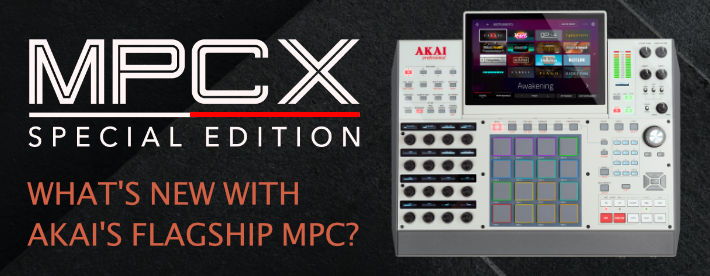
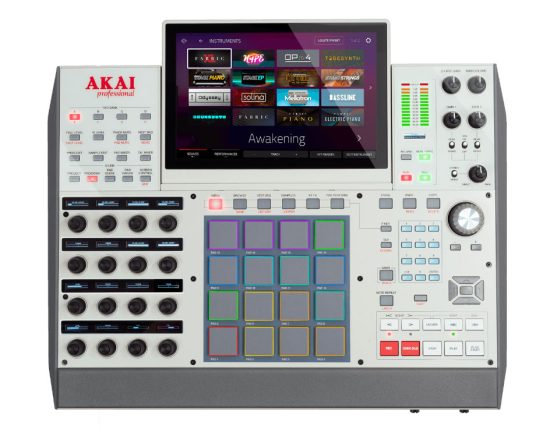
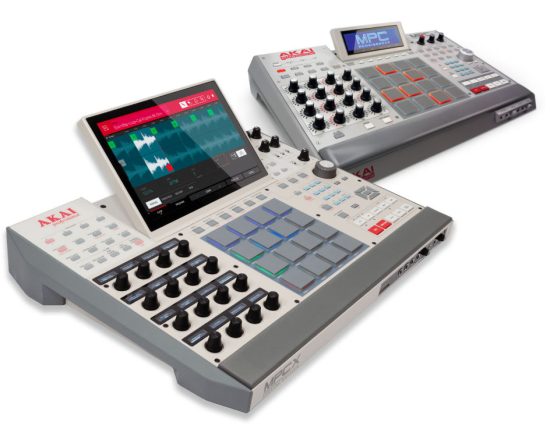
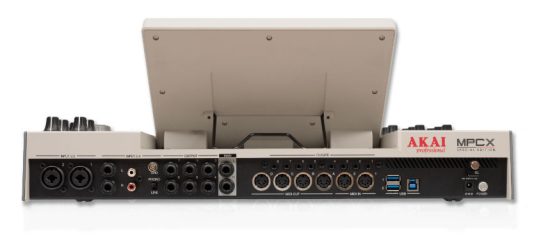

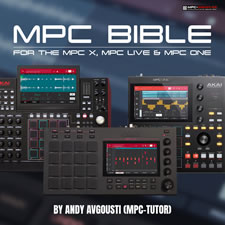




Jun 25, 2023 1:10 am
I like the memory upgrades and I wish they had did just a little bit more because it’s not too different from the MPC x. Maybe when the new shipment comes in I can get the upgrade mod and SSD drive with some new colorful skin and button changes and make it unique so I can love it just a little bit more for that $2500 plus tax. 😎